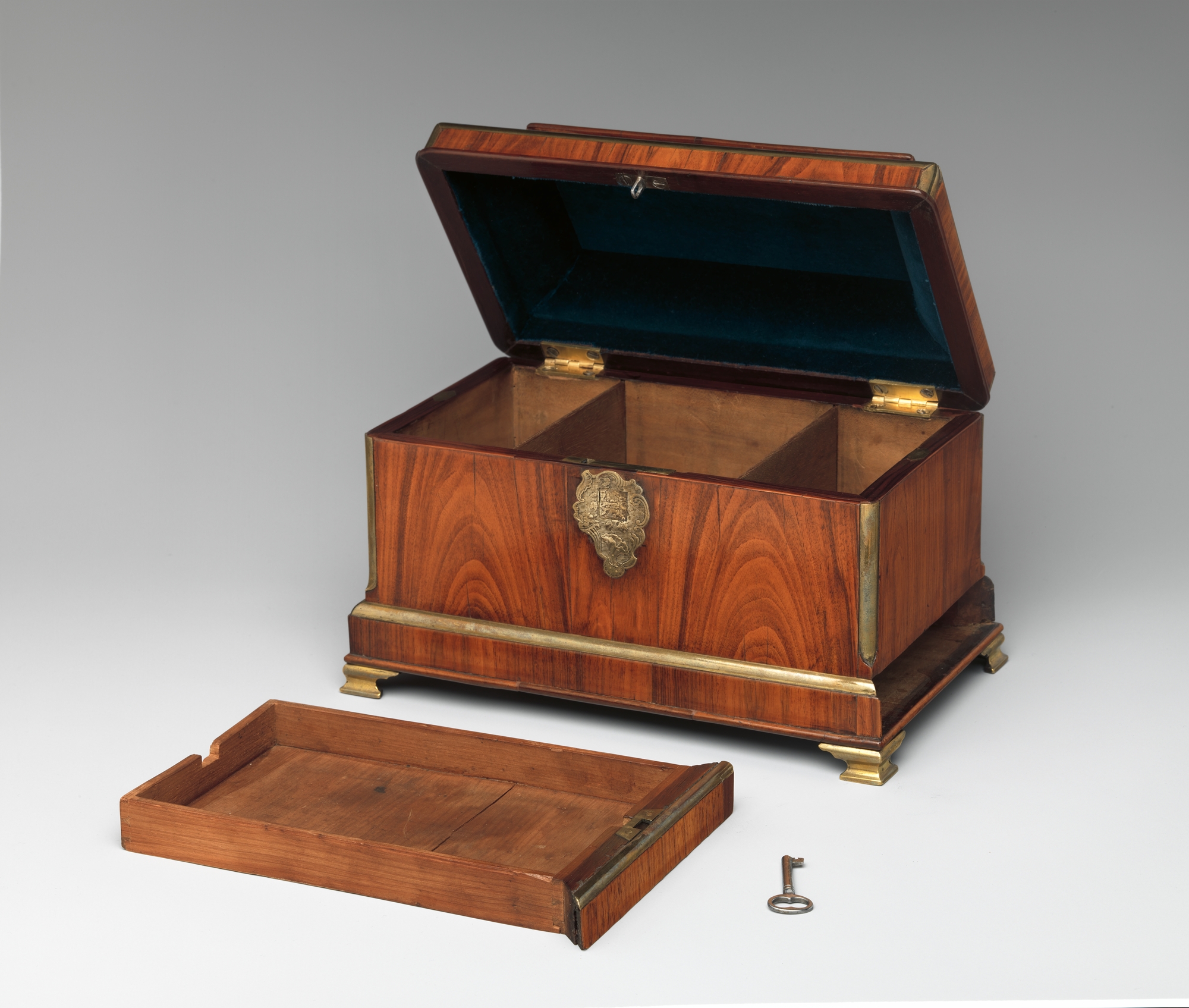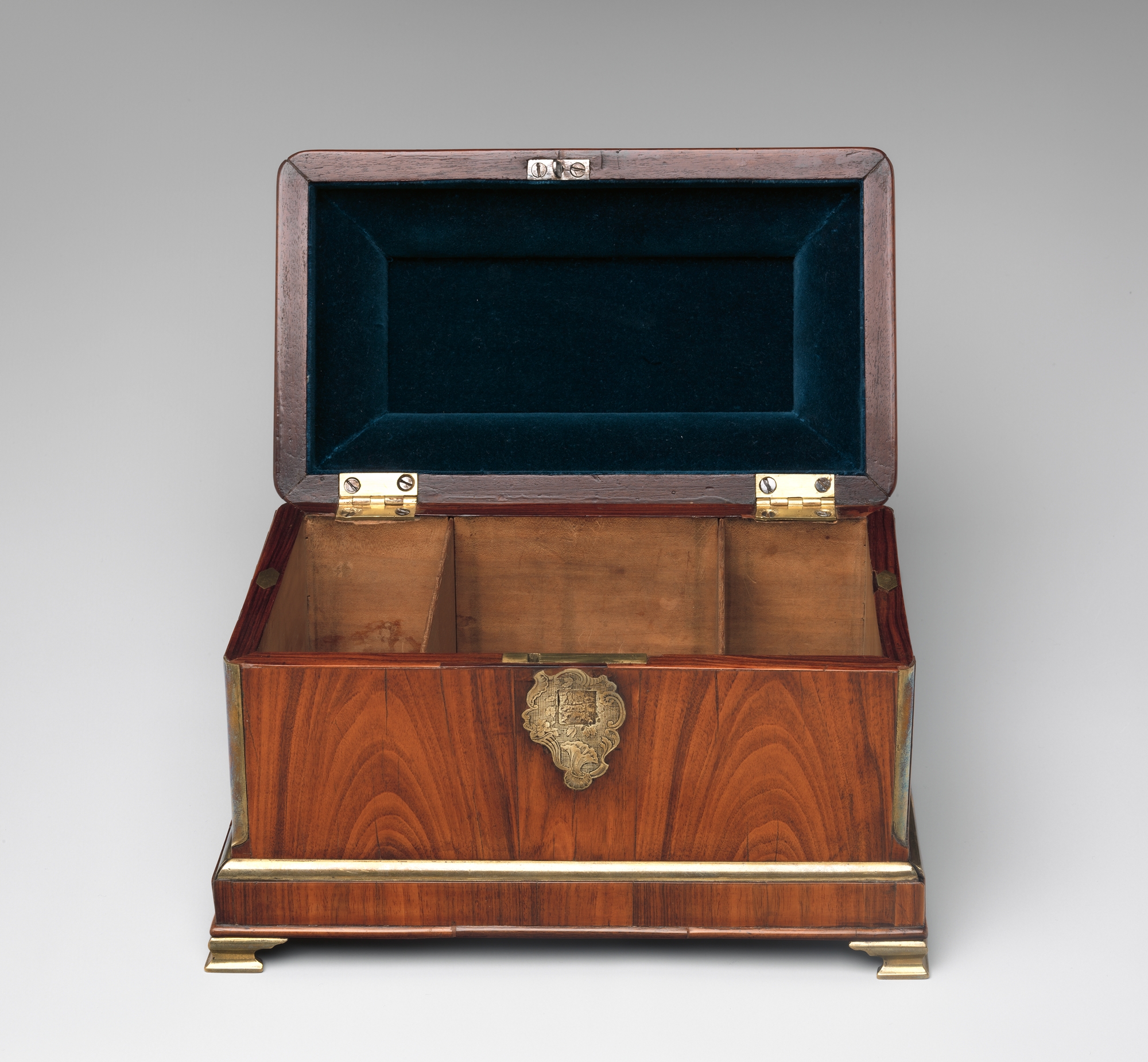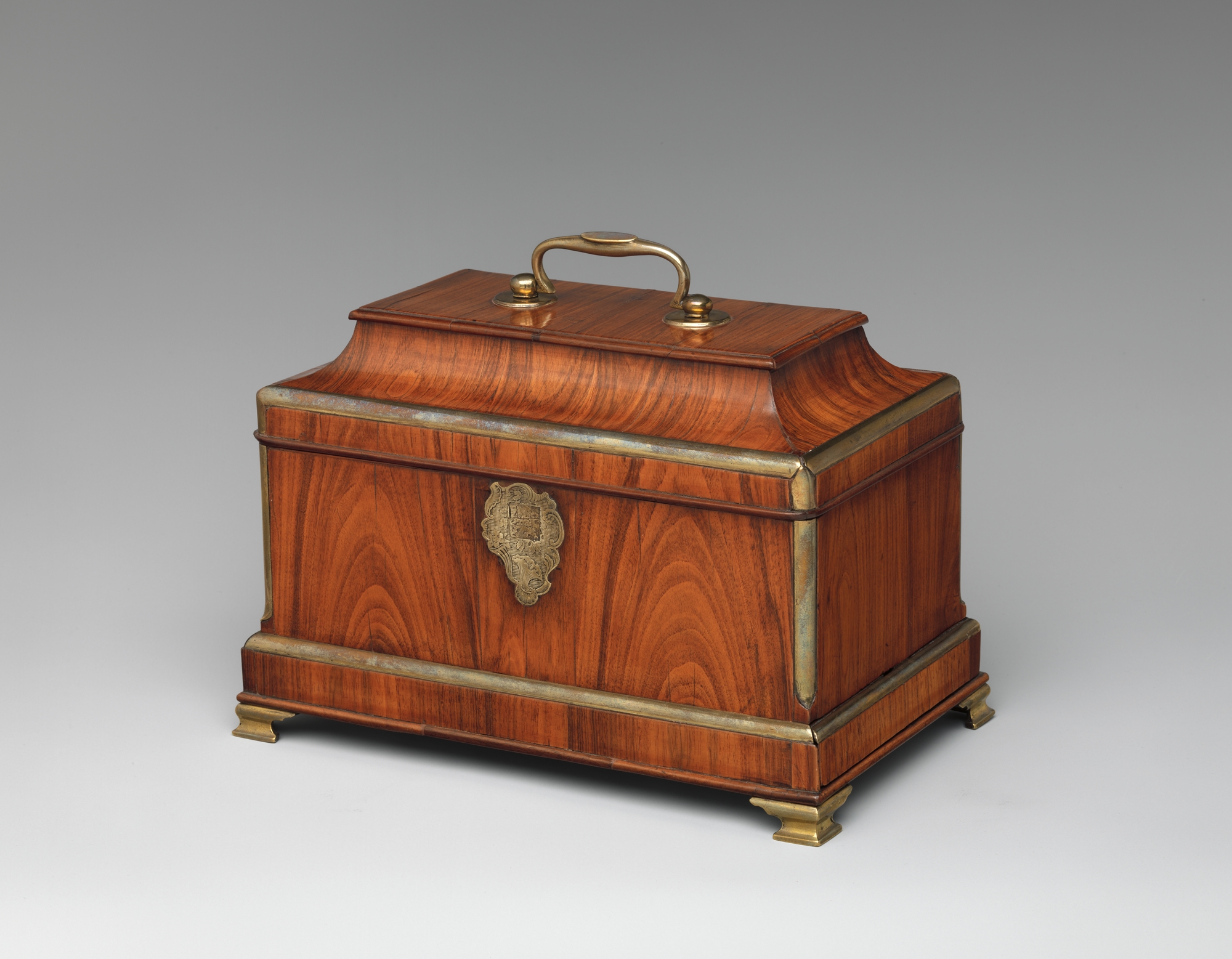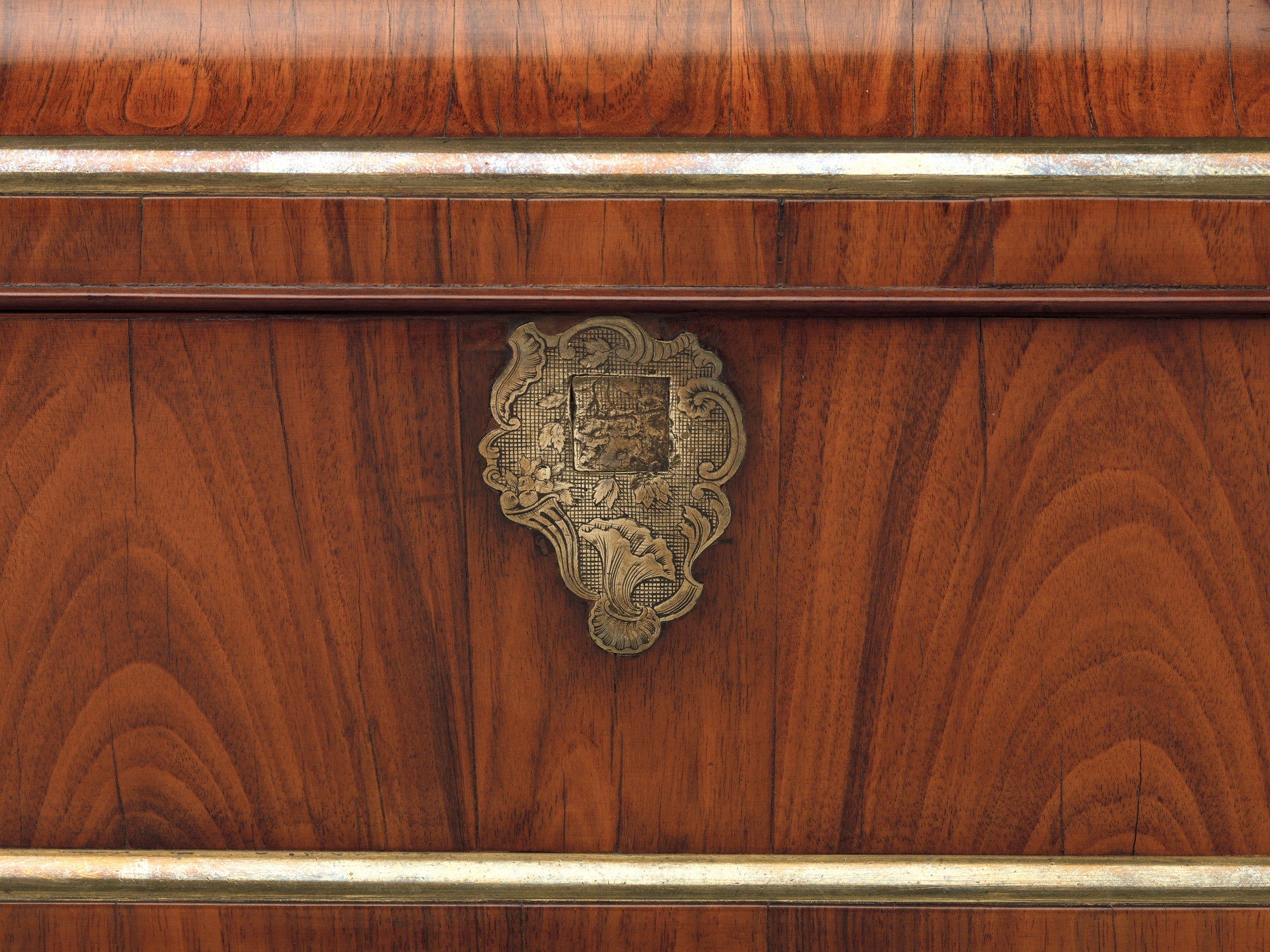Tea chest
Abraham Roentgen German
Beginning in 1742, when he started to work, Abraham Roentgen impressed the small princely courts and the landed gentry around Herrnhaag, as well as the rich patricians in nearby Frankfurt, with his brass-inlaid tea tables, gueridons, chairs, and tea chests in the "English Manner" (see fig. 3, p. 5).[1] Furniture of such high quality and so inventive in its design and execution was a novelty, and the demand for such objects increased rapidly.[2] One of Abrahams’ first tea chests was made in Herrnhaag for the princely house of Isenburg-Birstein. The appearance of that luxurious object in the prince’s drawing room would have informed his guests that he and his family were familiar with the latest fashions and social pastimes.[3]
The interior of the present example is partitioned to hold a pair of caddies for black and green tea. Between those spaces was a lidded box where sugar (or candies) could be stored or where tea leaves could be mixed. The arrangement would be repeated with many variations in the following decades. Almost all the details are typical of Abraham’s workshop products. They include English brass mounts, such as the handle and bracket feet, which could be bought from the metalwork pattern books and sales catalogues or Birmingham foundries[4], and a spring-operated secret drawer, which in this case occupies the base of the chest and opens from the right side when a button on top of the side panel (hidden when the lid is closed) is pushed. The overall design and decoration of the chest, however, is taken to an unusually high level.[5] The lid’s dramatic silhouette, undulating in the manner of a pagoda roof, alludes to the East Asian origin of tea, and the corners are emphasized by suave brass moldings ending in tongue motifs at the base. A brass cartouche engraved with rocaille and flora decoration is inlaid in the front, and a keyhole is hidden behind a small door that springs open at the touch of a hidden button underneath the chest. Abraham used cartouches of this shape surprisingly often; multiple examples were possibly die-cut from sheets of brass. Nevertheless, the surface was always engraved with different rocaille or floral motifs, so that a buyer could be sure he would not see an identical piece at a neighbor’s mansion. The tea chest became one of the Roentgen workshop’s best-sellers, and examples survive in relatively large numbers.[6]
[Wolfram Koeppe 2012]
Footnotes:
1. Proud of the skills he had mastered in England, Abraham called himself and "English Cabinet-Maker"; see the essay by Wolfram Koeppe in this volume. Much of the information in this entry was first presented in Wolfram Koeppe. "Kästchen aus der Werkstatt von Abraham Roentgen in amerikanischen Sammlungen." Giessener Beiträge zur Kunstgeschichte 10 (1997), pp. 98–110. Issue titled Zwischen Askese und Sinnlichkeit: Festschrift für Professor Norbert Werner zum 60. Geburtstag. See also the study of a tea chest in the English royal collections published in Wolfram Koeppe. "A Tea Chest by Abraham Roentgen at Frogmore House." In Makers, Dealers, and Collectors: Studies in Honour of Geoffrey de Bellaigue, pp. 161–7. London, 2007.
2. See, for example, Dietrich Fabian. Roentgenmöbel aus Neuwied: Leben und Werk von Abraham und David Roentgen. Bad Neustadt an der Saale, 1986, p. 75, ill. no. 124.
3. Wolfram Koeppe in Andreas Büttner, Ursula Weber-Woelk, and Bernd Willscheid, eds. Edle Möbel für höchste Kreise: Roentgens Meisterwerke für Europas Höfe. Exh. cat. Stadtische Galerie Mennonitenkirche and Roentgen-Museum, Neuwied, and Schloss Engers, Neuwied-Engers; 2007. Neuwied, 2007, p. 134, no. 3.
4. Nicholas Goodison. "The Victoria and Albert Museum's Collection of Metal-Work Pattern Books." Furniture History 12 (1975), pp. 1–30, pls. 42 (handle) and 44 (bracket feet); for additional sales catalogues, see Theodore R. Crom. An Eighteenth Century English Brass Hardware Catalogue. Hawthorne, Fla., 1994.
5. Christie's, New York, sale cat., September 17, 1990; another comparable English example was offered by Christie's, London, July 9, 1998, lot 19; see also Helena Hayward and Sarah Medlam. "The Continental Context: Germany." In John Channon and Brass-Inlaid Furniture 1730–1760, by Christopher Gilbert and Tessa Murdoch, pp. 24–36. Exh. cat. Temple Newsam House, Leeds; 1993. New Haven, 1993, pp. 122–25, pls. 161–69
6. Wolfram Koeppe. "Virtuosität bis ins kleinste Detail: Gravuren von Abraham Roentgen." In Willscheid and Thillmann 2011, p. 94, fig. 5.
Due to rights restrictions, this image cannot be enlarged, viewed at full screen, or downloaded.
This artwork is meant to be viewed from right to left. Scroll left to view more.







